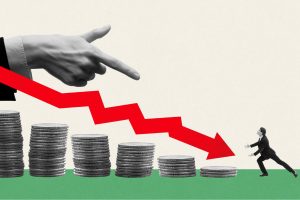It is a question we rarely ask. We think of money as something we use, not something that carries a cost of its own. Yet in finance, cash has a price: the interest rate. It is what you pay when you borrow and what you earn when you lend or save. It reflects how valuable money is today compared to tomorrow, and that idea lies at the heart of the time value of money.
The Real Rate: The Reward for Waiting
Imagine you have saved ₨ 200,000 for your dream vacation. Just as you are about to go, a friend asks to borrow that amount. You agree, but you are giving up your trip now for the promise of repayment later. Naturally, you deserve something in return, known as the real rate of interest, or your reward for postponing today’s satisfaction.
In simple terms, the real rate measures how much people value present money over future money. It captures the idea that a rupee in hand today is worth more than a rupee you might receive later.
Inflation: The Price That Keeps Rising
Your friend promises to pay you back next year. But you know that by then, prices will rise. Hotels, airfares, and even food will cost more. To make sure you can still afford that same trip later, your friend must add something extra to cover inflation.
Together, these two components make up the nominal interest rate:
Nominal Rate = Real Rate + Inflation
Credit Risk: When Trust Has a Price
Now imagine hearing that your friend often pays late or sometimes not at all. You would probably expect more in return to compensate for that uncertainty. That extra return is the credit risk premium, and it explains why a credit card loan costs more than a car loan, since one is unsecured while the other is backed by an asset.
Interest Rates and the Bigger Picture
Beyond personal finance, interest rates tell us a great deal about the economy. When central banks, such as the State Bank of Pakistan, raise rates, borrowing becomes expensive, spending slows, and inflation tends to come down. When they lower rates, borrowing becomes cheaper, encouraging businesses and consumers to invest and spend more. These changes affect everything from job growth to currency value, making interest rates one of the most powerful signals of economic health.
Bringing It All Together
Interest rates are more than just numbers on a bank screen. They reflect time, trust, and risk, showing how people value money across different moments in time. Understanding this concept is the essence of financial literacy. It helps you see how the economy moves, why borrowing costs change, and what tomorrow’s rupee is really worth today.
By: Khurram Ali Mubasher
Senior Lecturer,
Department of Finance & Economics
Iqra University






